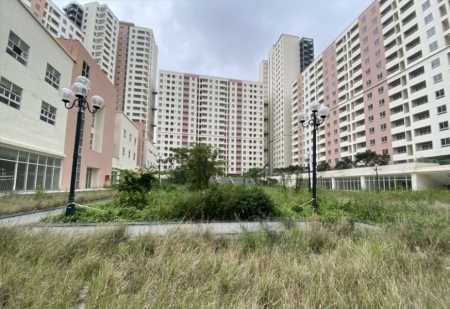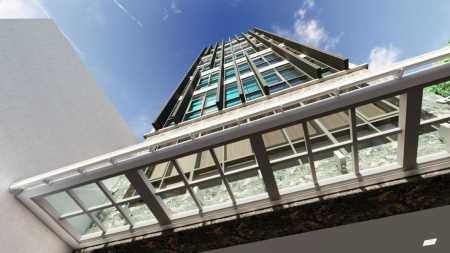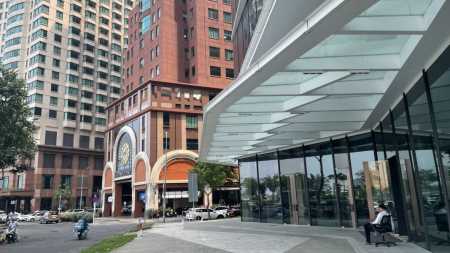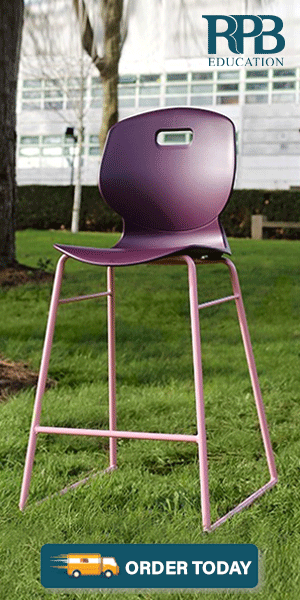24 Hours in Saigon: A Culture Lover’s Travel Guide
An urban-jungle, Paris of the Orient, Vietnam‘s economic hub — Saigon (Ho Chi Minh City on the map) has been called many names in its 400 years
This complex identity speaks to the city’s magnetic character and restless energy. Although it’s not the most walking-friendly place, with terrible pavements and sights spread far apart, grab yourself a moto taxi for the day and enjoy our 24 hour insider tour through Saigon’s beauty and craziness.
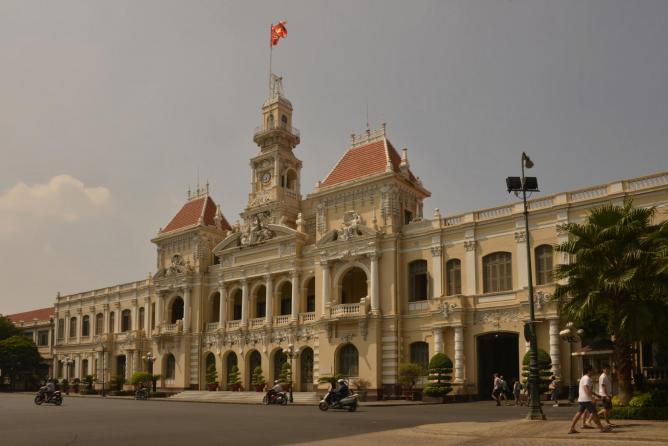
© Tartarin 2009/Flickr
6 p.m.
Start by familiarising yourself with the traffic and the explosive atmosphere of Saigon by taking a walk around Le Loi and Ben Thanh Market area. Although this falls under typical tourist activities, it offers a valid glimpse of Saigon’s historical architecture and shops. Ben Thanh Market, which recently celebrated its 100th birthday, is considered one of the landmarks of the city. Due to its popularity, in recent years the market has become quite touristy; however, the architecture and the interiors have not changed much, making it an ideal place for people to experience the dynamics of a traditional local market.
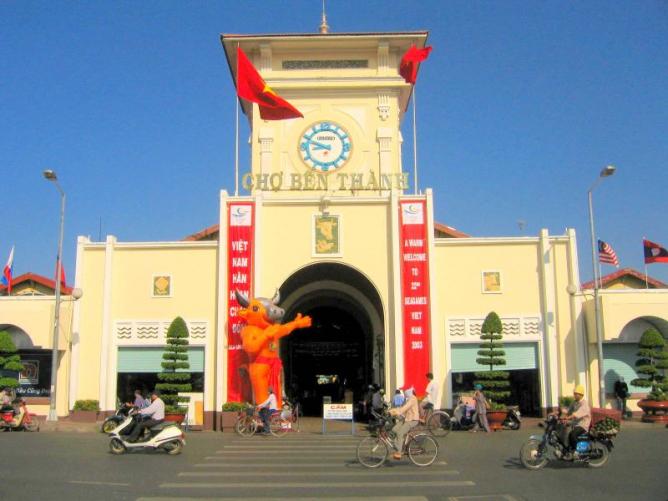
Ben Thanh Market | © Nguyen Thanh Quang/WikiCommons
Continue your walk down Pham Ngu Lao, on your right the so called ‘backpacker area’ will start appearing, but look beyond to Pham Ngu Lao Park. In the early evening, the park is populated by locals practicing sport, doing exercise or simply sitting down on the pavement while having a coffee with friends, perfect for people watching. One of the best venues to enjoy a cocktail before dinner is Chill Sky Bar. Designed by the same architect of the homonymous bar in Bangkok, this venue’s bar offers a breathtaking view of Saigon’s skyline and delicious cocktails. Obviously, all of this comes at a price that is above the norm for the city — but it’s worth it!
8 p.m.
Truth needs to be told: the best Vietnamese food in town is from street restaurants and quang gánh (the iconic scale-designed baskets). Eating and drinking in the street is a regular social activity in Vietnam, which means that you will not walk more than 100 meters without seeing a local restaurant. If you encounter a busy place facing the road, with tiny chairs and tables that seem to have been taken from a kindergarten’s classroom, then that is the place where you should eat. The same goes for street vendors, and, as long as you see local people eating there, the food is guaranteed to be good. Understandably, most travellers feel intimidated by the language barrier and by the messiness of these eateries, so hop on a xe ôm (motorbike taxi) and head to Cuc Gach Quan. Among the best restaurants in town, Cuc Gach Quan has three great advantages: it’s housed in a beautiful, heritage-designed three-story building; the staff speaks English and can recommend traditional dishes for first-time visitors; moreover, it offers an extensively Vietnamese food selection (the menu looks more like a book than an actual menu).
Insider Tip:
Avoid doing your souvenir shopping at local markets (including Ben Thanh), in the following section you will find more local and authentic places where to buy your gifts. If you are moving around town by xe ôm, always agree on the price first and write the address on a piece of paper; Vietnamese is a tonal language so the locals might misunderstand the streets’ or venues’ names you are looking for. If you prefer to use a taxi, only use Vinasun (white cars with green and red signs) and Mailinh (usually green vehicles) companies, as they have a meter and will not overcharge you..
Day Two
10 a.m.
Try the traditional Vietnamese breakfast of phở, rice noodle soup with herbs and meat. Other breakfast favourites are banh mi, a Vietnamese baguette filled with pate, meats, soy sauce, chilli and crudités – or its variation with eggs, banh mi op la. In the morning, those can be found at every street corner around the city. If you would rather opt for a western breakfast, go down Le Loi to L’Usine. This popular French café offers a good selection of dishes for breakfast as well as home-made French pastries.

Banh Mi | © Nsaum 75/WikiCommons
11 a.m.
On the same road, there is Mekong Creations, a part of NGO Mekong Plus project. The shop sells hand-crafted gift items, which reflect traditional Vietnamese products and materials, such as papier mache, silk and bamboo. From here, take a xe ôm or a cyclo and head to the War Remnants Museum. The three-story building encompasses a well-preserved and comprehensive collection of the Vietnam War, from original Life Magazine’s photographs to weapons, aircraft and tanks.

War Remnants Museum | © calflier001/WikiCommons
12 a.m.
From the Museum, head south along Nam Kỳ Khởi Nghĩa and pay a visit to the Reunification Palace. Designed by architect Ngô Viết Thu, the building served as residence as well as government workplace of the President of South Vietnam during the War. It became an iconic landmark symbolizing the end of War when a North Vietnamese tank crashed thought its gates. The interiors have been untouched since then, and they present an exquisite view of typical French, Vietnamese and Chinese interior designs of that era.
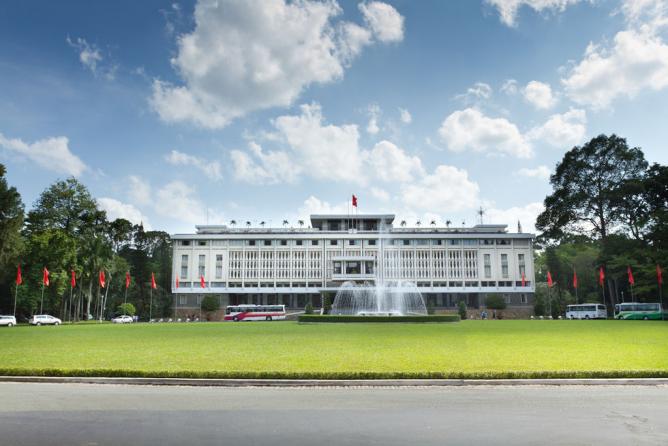
Reunification Palace | © Mahen Bala/WikiCommons
1.30 p.m.
Have a relaxing lunch at Propaganda, just across from the Palace. The restaurant offers a good selection of traditional Vietnamese dishes in a funky, laid-back environment. As its names suggests, the interiors are decorated with painted propaganda murals, and it an outside dining area facing the park. Its neighbour, Au Parc, is an excellent alternative if you are craving Western food, as it’s a Mediterranean bistro specialising in Mediterranean cuisine.
3 p.m.
From the restaurant’s terrace you can see Notre Dame Cathedral (Nhà thờ Đức Bà) on your right. Erected during the French colonial period using imported tiles and marbles, it is the most symbolic church in town. On the right of Notre Dame, there is the majestic post office. (Bưuđiện Trung tâm); built by the renowned architect Gustave Eiffel, it opened in 1891 and it is still active now. The building is an excellent example of the neoclassical architecture of that era, and it also contains old French colonial maps painted on the walls.
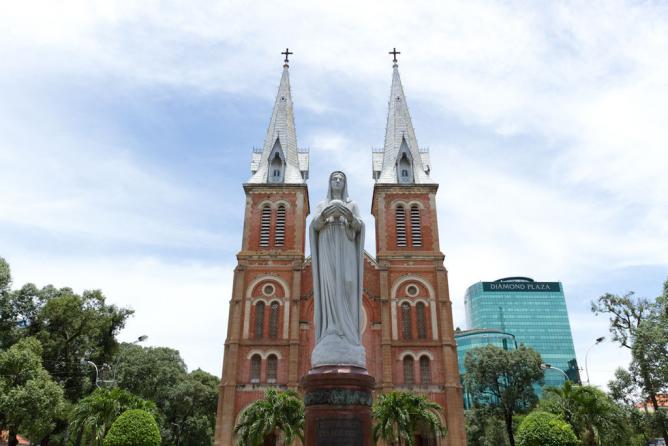
Notre Dame Cathedral | © Mahen Bala/WikiCommons
Leaving the Post Office, head south on Dong Khoi Street, which embodies the many architectural changes that Saigon has been through since the French period. The face of Dong Khoi has been subjected to drastic modifications in recent years, but you can still find colonial houses and shops.
Still on Dong Khoi, you can visit the biggest theatre in Saigon, the Opera House (Nhà hát lớn Thành phố Hồ Chí Minh). Completed at the end of the 19th century by French architect Eugène Ferret, the Opera House is still in use today. Its event calendar presents a variety of classical concerts, dance performances and, since last year, the permanent A O Show, which features circus acts and performances by Vietnamese break-dancers, aerialists, martial arts experts and traditional musicians.
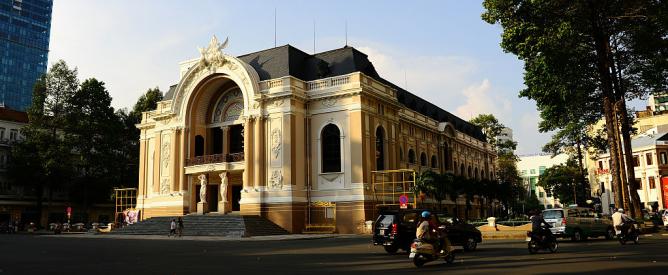
Saigon Opera House | © TomW712/WikiCommons
4 p.m.
A typical day in Vietnam cannot go by without drinking coffee. Vietnam is the second biggest exporter of coffee in the world and, over the last century, has developed its own way to make and drink the beverage. Locals either drink cà phê đá (ice coffee) or cà phê sữa đá (ice coffee with condensed milk). The same advice given for food applies to coffee: many street vendors are scattered around the city, and they will pull out a chair for you in the middle of the pavement to sit down and enjoy your coffee while people-watching. If instead you fancy a more elegant environment, head down to RuNam café; despite being extremely expensive by local standards, it is one of a kind when it comes to coffee. The elegant coffee shop is the first in Vietnam to combine Vietnamese coffee beans with Italian blending techniques and technologies.
Click here for a detailed map of Day Two.
By Silvia Buonpadre
Đăng Ký
Share this:
Related Posts
Leave a Reply
Fan Page2
Top Views
Video
12/1/2015 10:32:36 AM
Welcome to Vietnam

Video
12/27/2015 12:11:22 PM
"Sa Pa Is Awesome"
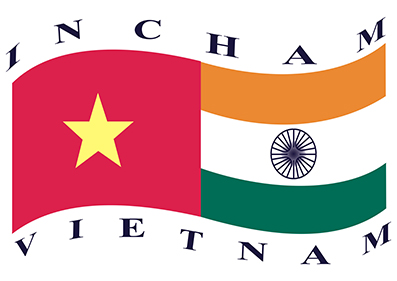
VIETNAM BUSINESS & EVENT
5/4/2018 9:27:41 PM
CO-HOST SBG Raffle Night Blockchain and Cryptocurrency

VIETNAM BUSINESS & EVENT
5/4/2018 9:30:22 PM





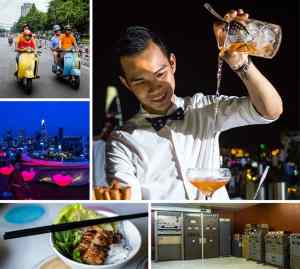



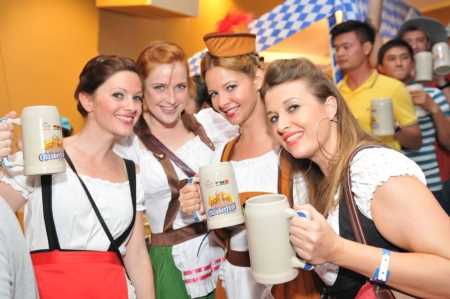
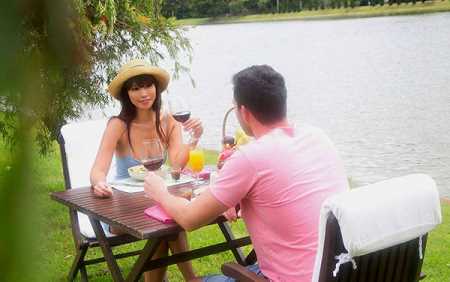

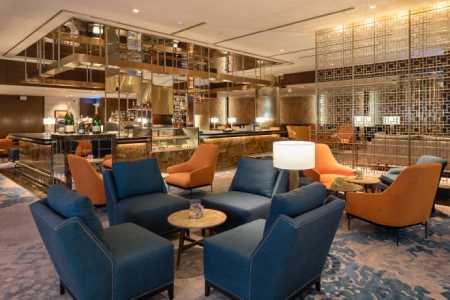
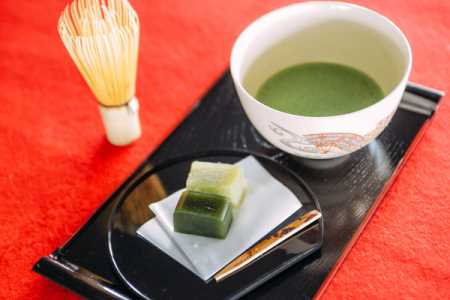


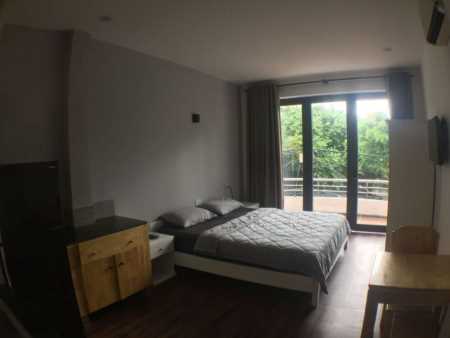


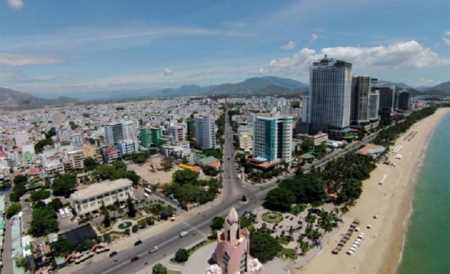
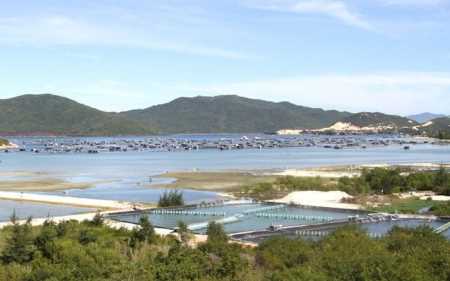

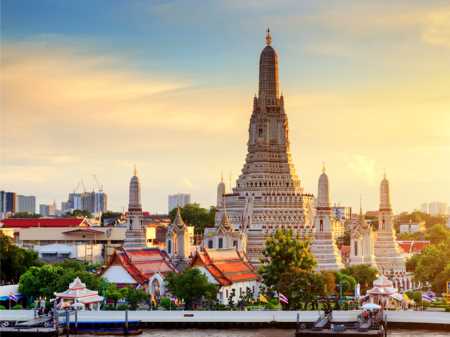
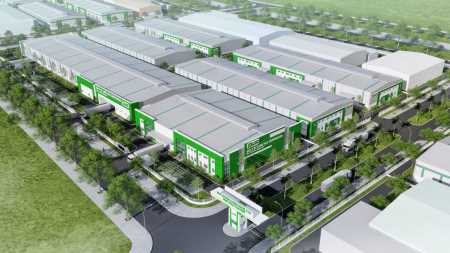
.jpg)

